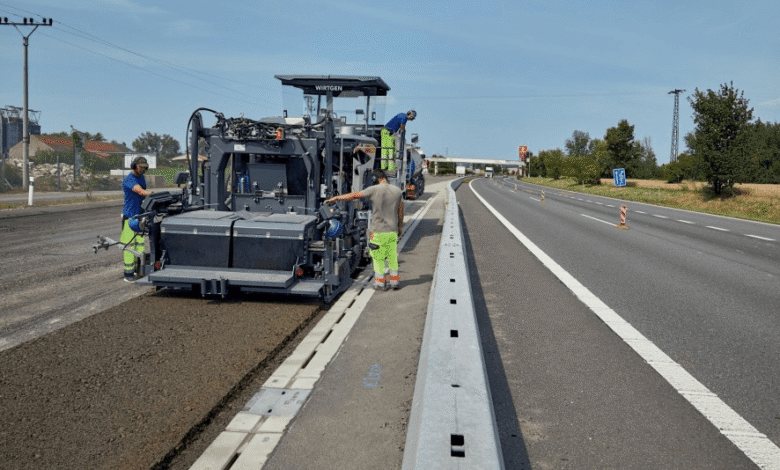Understanding Carretera Base: The Backbone of Road Construction

In road construction, the strength and longevity of a pavement largely depend on what lies beneath the surface. One of the most critical yet overlooked components of a roadway is the carretera base, or base layer. While asphalt or concrete top layers often get the spotlight, it’s the carefully designed and engineered base that ensures structural integrity, distributes loads, and prevents long-term failures such as cracking, potholing, and rutting.
This article dives into the meaning, types, functions, materials, and importance of the carretera base, explaining why it’s essential for durable and sustainable road infrastructure.
What is a Carretera Base?
The term carretera base refers to the foundational layer of a roadway built directly on top of the subgrade (natural or prepared soil). It serves as a transition between the subgrade and the surface layers such as asphalt or concrete. This base layer is designed to be strong, well-drained, and stable, providing the necessary support to bear vehicle loads without deforming over time.
The carretera base is typically composed of granular materials like crushed stone, gravel, recycled concrete, or stabilized soil mixtures. It may be unbound (compacted without a binding agent) or bound using cement, asphalt emulsion, or other stabilizers for added strength.
Functions of the Carretera Base Layer
The carretera base plays several crucial roles in road performance and sustainability:
- Load Distribution: It spreads traffic loads from vehicles over a wider area of the subgrade, minimizing deformation or settlement.
- Support: It offers a firm and uniform support surface for pavement layers above.
- Drainage: Properly graded and compacted base materials allow water to drain away, preventing subgrade saturation.
- Frost Protection: In cold climates, it helps reduce frost heave by providing thermal insulation and improving water drainage.
- Erosion Resistance: A well-constructed base protects the subgrade from erosion caused by water infiltration or dynamic vehicle loads.
See also: Launching Your Journey as a New Business Owner
Common Materials Used in Base Layers
Selecting the right material for the carretera base is crucial for ensuring performance and longevity. The most commonly used materials include:
1. Crushed Stone or Crushed Rock
This is the most popular choice due to its high strength, excellent compaction, and durability. It comes in various sizes, typically graded for optimal performance.
2. Gravel
Naturally occurring gravel offers good compaction and drainage but may require blending with crushed rock to enhance performance.
3. Recycled Concrete Aggregate (RCA)
Environmentally friendly and cost-effective, RCA provides a sustainable option for base construction while maintaining adequate strength.
4. Cement-Stabilized Base (CSB)
Mixing soil or aggregate with a small percentage of cement increases strength and reduces moisture sensitivity.
5. Bitumen-Stabilized Material
Combining aggregate with asphalt emulsion creates a semi-flexible base with enhanced durability in wet conditions.
Types of Carretera Base Layers
Depending on design specifications and performance requirements, the carretera base can be classified into several types:
1. Unbound Granular Base
Made from crushed stone or gravel compacted without any binding material. It’s widely used for secondary or rural roads.
2. Bound Base
Involves materials mixed with cement, asphalt, or chemical additives for increased rigidity and load-carrying capacity.
Construction Process of the Carretera Base
Creating a stable carretera base involves meticulous planning, material selection, and execution. Here’s a general overview of the construction steps:
- Site Preparation: Clear vegetation, debris, and soft soil to prepare the subgrade.
- Subgrade Compaction: Compact the natural soil to specified density.
- Material Placement: Spread the selected base material evenly across the site.
- Layer Compaction: Compact the base in layers using rollers to achieve uniform density.
- Grading and Leveling: Shape the surface with proper cross slope for drainage.
- Quality Control: Conduct tests like CBR (California Bearing Ratio), density, and moisture content to ensure compliance with design standards.
Importance of Base Layer in Road Durability
The carretera base may not be visible once the road is paved, but it has a significant impact on performance. Roads without a well-constructed base tend to fail quickly under heavy traffic loads. Potholes, cracks, and subsidence often originate from poor base construction.
A strong and well-compacted base not only improves the load-bearing capacity but also extends the lifespan of the pavement. It reduces maintenance needs, increases safety, and improves ride comfort for road users.
Innovations in Base Layer Technology
Advancements in materials and design have brought new innovations to the carretera base. Some of the most notable include:
- Reinforced Soil Bases: The use of geosynthetics has allowed for thinner yet stronger base layers.
- Cold Recycling: Existing pavements are milled and reused in base construction, reducing material costs and environmental impact.
- Nanomaterials: New additives like nanoclays and polymers enhance the performance of soil and aggregate mixtures.
- Smart Sensors: Embedded sensors in base layers help monitor moisture, stress, and temperature, leading to proactive maintenance.
Environmental Considerations
Using sustainable practices in base construction is gaining momentum. The carretera base can contribute to sustainability through:
- Recycled Materials: Incorporating recycled asphalt, concrete, or plastics into base materials.
- Local Sourcing: Reduces transportation emissions and costs.
- Permeable Systems: Allows water infiltration to recharge groundwater and reduce runoff.
These measures align road construction with green building principles and reduce the environmental footprint of infrastructure projects.
Final Thoughts
The carretera base is not just another layer in road construction—it is the foundational support that determines the success or failure of the entire pavement structure. With proper design, material selection, and construction practices, the base layer ensures that roads are durable, safe, and cost-effective over the long term.
As infrastructure demands increase globally, understanding and optimizing the carretera base will play a key role in building resilient and sustainable road networks. Whether for highways, rural roads, or urban pavements, investing in a strong base is an investment in the future.





